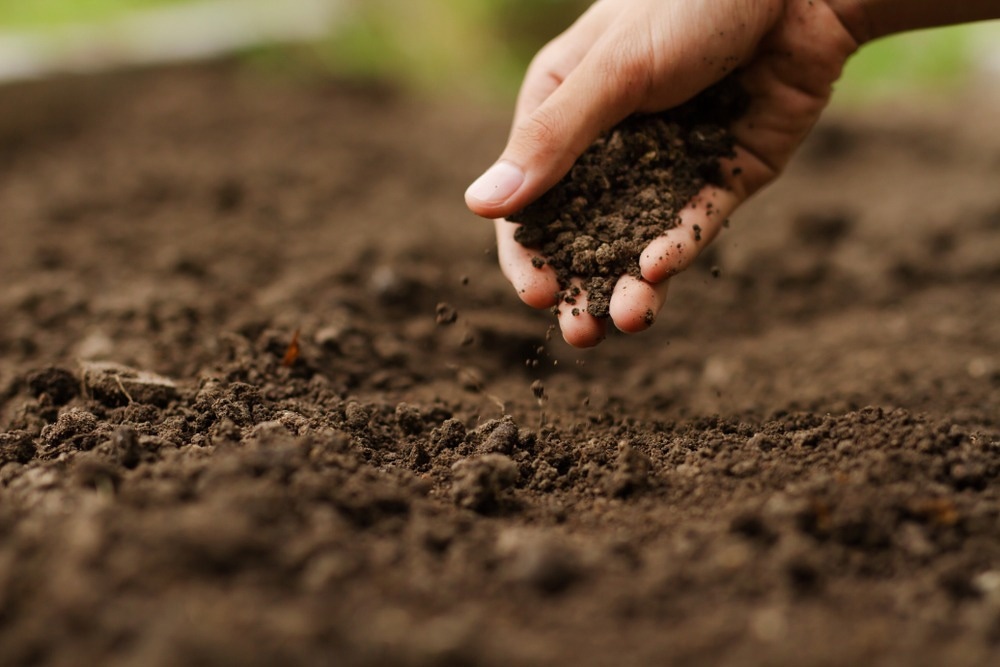Reviewed by Danielle Ellis, B.Sc.Oct 24 2023
Professor Toshihiko Eki, from the Department of Applied Chemistry and Life Science at Toyohashi University of Technology (also holding a concurrent position at the Research Center for Agrotechnology and Biotechnology), collaborated with a research team to employ DNA metabarcoding.
 Changes in network of eukaryotic SVs (center) and proportion of SVs that constitute the network (right) due to the shift in cultivation from corn to cabbage (left, top to bottom). Image Credit: Toyohashi University of Technology.
Changes in network of eukaryotic SVs (center) and proportion of SVs that constitute the network (right) due to the shift in cultivation from corn to cabbage (left, top to bottom). Image Credit: Toyohashi University of Technology.
They applied this technique to examine alterations in the community of soil organisms connected to the cultivation of crops in two corn-cabbage rotation fields located in Tahara City.
The findings indicated that soil organisms and their interconnected systems within agricultural environments can undergo unexpected changes due to factors such as soil conditions, cultivation history, and the choice of crops.
In the coming years, utilizing DNA metabarcoding for the analysis of soil biota will facilitate a deeper understanding of the intricate interactions between crops and soil organisms. This approach will also aid in assessing the biological characteristics of farmland and predicting crop diseases, ultimately leading to advancements in crop cultivation techniques.
Details
Throughout history, the relationship between soil and humanity has been intricately connected through the practice of agriculture. In recent times, there has been a global resurgence in recognizing the significance of soil and the imperative for its preservation. This is exemplified by the designation of 2015 as the International Year of Soil.

Image Credit: Piyaset/Shutterstock.com
A multitude of organisms, encompassing bacteria, nematodes, arthropods, and fungi, coexist within the soil, collectively forming a complex soil ecosystem. Nevertheless, the precise compositions and dynamics of these organisms remain uncertain.
In previous studies, the research team employed DNA barcoding to comprehensively assess nematodes. This approach identifies biological species by contrasting the unique nucleotide sequences in their genes, unveiling distinctive nematode communities well-suited to diverse soil environments.
Moreover, the research team introduced "DNA metabarcoding" using a next-generation sequencer, capable of decoding extensive nucleotide sequences. This method enabled the comprehensive analysis of all prokaryotic and eukaryotic organisms inhabiting soil.
In the current investigation, the research team employed DNA metabarcoding on the soils of two distinct fields in Tahara City, where corn and cabbage crops were rotated in 2019 (referred to as Field 1 and Field 2). The aim was to scrutinize the taxonomic structure and diversity of prokaryotes and eukaryotes associated with crop cultivation, their intricate ecological networks, and the correlation between soil chemical attributes and these organisms.
The two fields selected for this research had dissimilar cultivation histories. In the preceding year (2018), Field 1 remained fallow with the incorporation of green manure, whereas Field 2 witnessed the same crop rotation involving corn and cabbage.
To classify prokaryotes and eukaryotes, segments of the 16S and 18S ribosomal RNA genes were employed as DNA barcodes. This approach identified a total of 3,086 unique nucleotide sequence variants (SVs) for eukaryotes and 17,069 SVs for prokaryotes.
A detailed analysis of the SV data revealed that, firstly, there were distinct biological communities in the four soil samples derived from different fields and crops. This observation underscores the influence of both the specific fields and the types of crops on the composition of soil organisms.
Subsequently, the research team delved into the connection between soil chemical parameters and organisms. In doing so, they uncovered biological clusters and prominent sequence variants (SVs) that exhibited strong correlations with factors such as soil pH, moisture levels, nitrate nitrogen content, nutrient salt concentrations, and others.
Finally, a network analysis of prokaryotic and eukaryotic SVs revealed an intriguing discovery.
For the first time, it was observed that the network structure within the soil where corn was cultivated in Field 1, left uncultivated in the previous year, displayed a noticeably lower complexity compared to the other soil samples. However, with the subsequent cultivation of cabbage, the network complexity notably increased.
This procedure primarily included the participation of not just fungi but also protists like Cercozoa. The study revealed that the soil organisms and the interconnected networks in agricultural soil can be impacted and readily altered by factors such as the soil environment (including chemical components), farming history, and crop types.
Future Outlook
This study demonstrated the utility of the DNA metabarcoding technique in the biological analysis of agricultural soils. Recent investigations have highlighted the significant impact of gut microbiota on human health, drawing parallels between the connection of plants (crops) with soil organisms and the relationship between humans and their gut microbiota.
The research team holds the view that soil organisms, especially those inhabiting the rhizosphere, play a vital role in the well-being and development of crops. They aspire to further advance their research by emphasizing the interactions between plants and rhizosphere organisms in the future.
Source:
Journal reference:
Kenmotsu, H., et al. (2023) Distinct prokaryotic and eukaryotic communities and networks in two agricultural fields of central Japan with different histories of maize–cabbage rotation. Scientific Reports. doi.org/10.1038/s41598-023-42291-y.